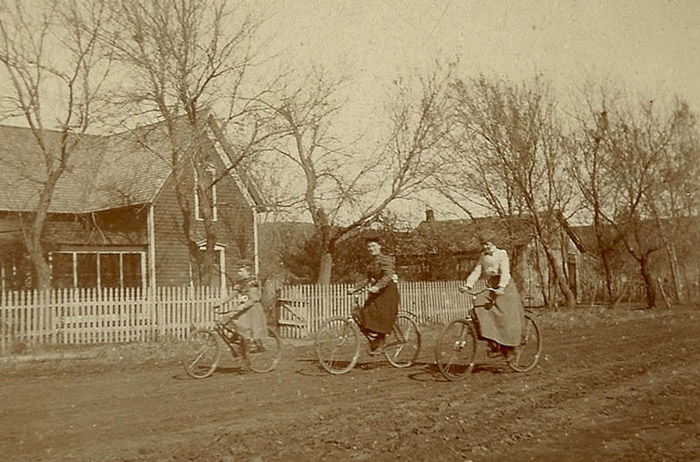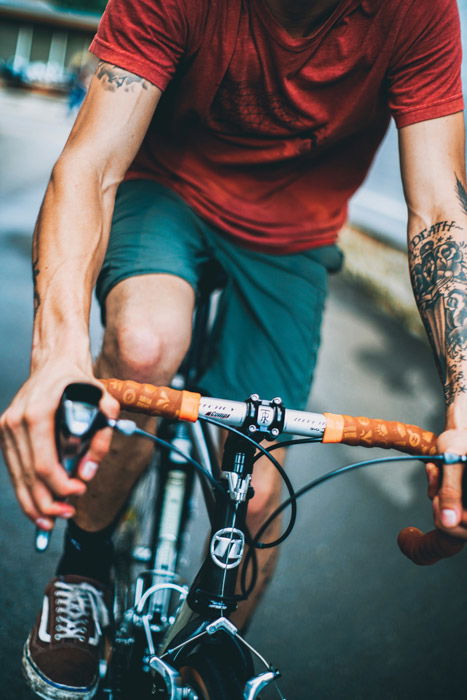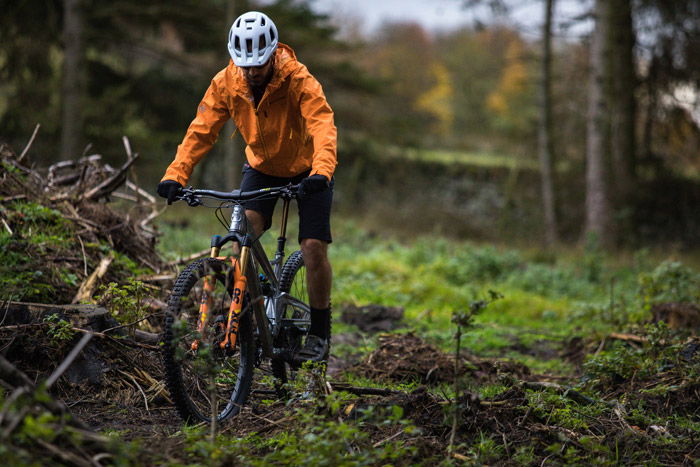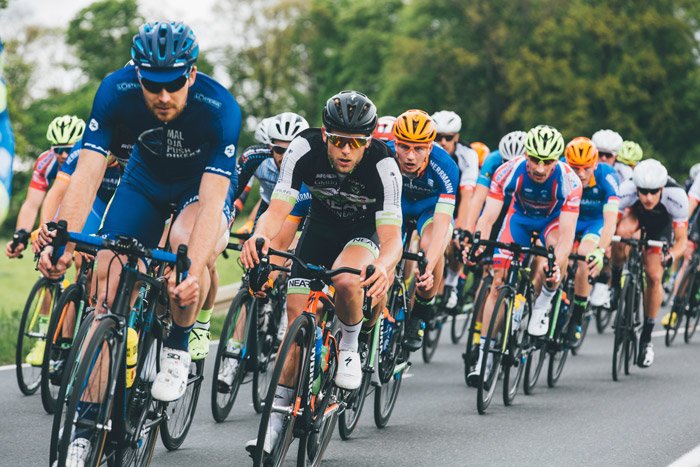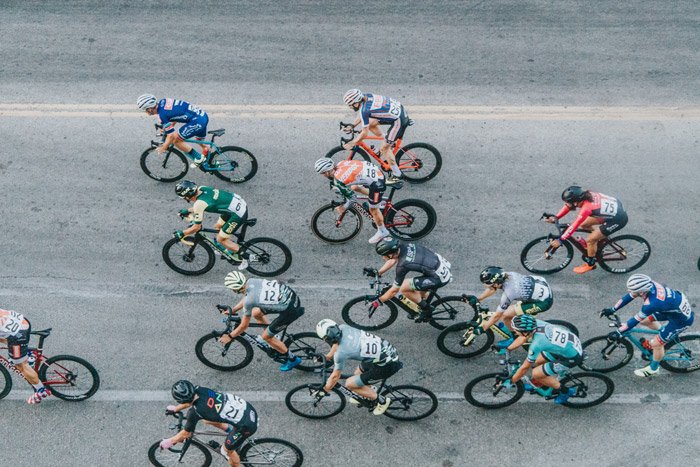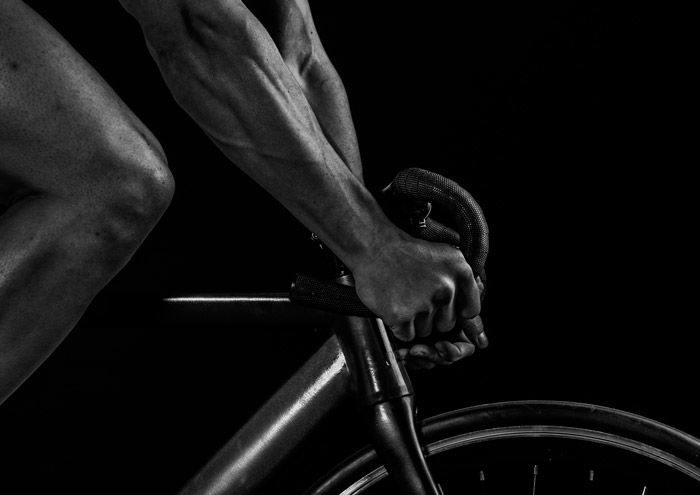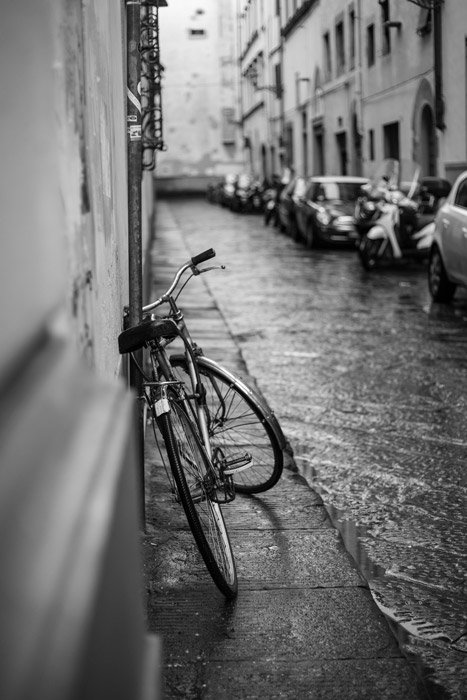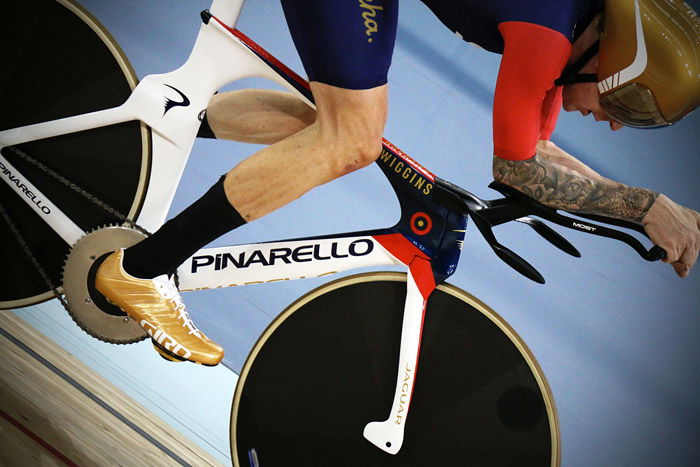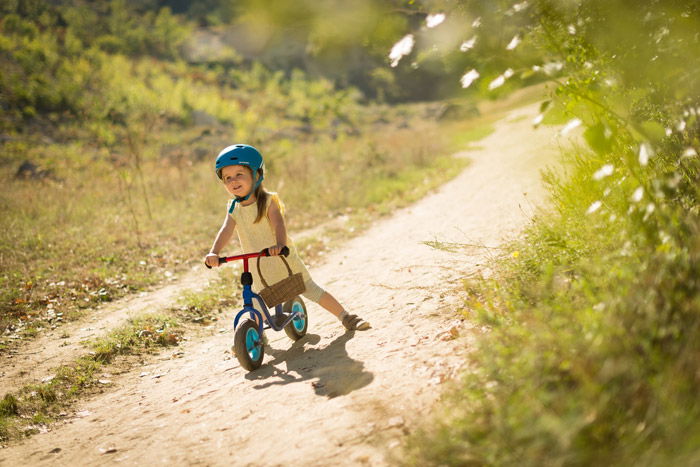Here are 8 tips for better bicycle images and cycling photography.
Cycling Photography: How Biking and Photography Developed Together
Nicéphore Niépce, best known as one of the fathers of photography, is also a key figure in the history of bicycles. Niépce built an improved version of the Laufmaschine with an adjustable saddle. He called his build the Velocipede. The cycling boom of the 1890s occurred alongside the beginnings of amateur photography. The combined use of bicycles and cameras introduced a new dimension to photography. Manufacturers began producing camera cases that fit on bicycle frames or handlebars. Cycling photography magazines launched. And photographers found they were able to travel to subjects with far greater ease. Today, cycling and photography have remained intertwined. Portable photographic technology has even allowed riders to capture imagery mid-ride.
2. Choose Your Equipment Based on the Cycling Event
From streets to velodromes, cycling is a major mode of transport. That means that different photographic equipment is ideal for different cycling environments. In the street, you can get close to the subject, whether it’s a cyclist or a bike on its own. A conventional zoom or prime lens is adequate in street situations. For events like BMX races or velodrome trials, chances are you will be further away from the action. In this case, a telephoto lens is a good option. And if you are using a telephoto lens, a monopod will take some of the weight of the lens off your back. To capture an environmental shot of a rider, a wide-angle lens will come in handy. While it can be expensive, a lens that can get down to apertures like f/2.8 is ideal for low-light conditions. A fast lens gives you greater flexibility and less unwanted noise and blur. This is especially useful during nighttime BMX trials or early morning circuits. Flash can also be used both on and off camera to illuminate your cycling scene and freeze motion. Although small, the memory card you slot into your camera can make a big difference. When it comes to speedy subject matter, a memory card that can read and write quickly is important. Of course, with all that said, the best equipment is the stuff you have on you. Camera settings, positioning, perspective… there are many photography techniques that can make up for a gap in your equipment. For example, being close to passing cyclists can negate the need for a telephoto lens. Shoot at different locations, try different perspectives, focus on different elements. With a little extra legwork, you may discover that a more economical setup works just fine!
3. Use High Shutter Speeds to Freeze Cyclists in Motion
Once you have your equipment sorted, it’s time to consider camera settings. When in motion, cyclists can be fast subjects – that means the correct shutter speed is important. Working in Shutter Priority or Manual mode is ideal for cycling photography. High shutter speeds freeze a cyclist in action. A shutter speed exceeding 1/1000th of a second may well be necessary to capture a crisp image. As I mentioned before, a fast lens is ideal, especially in low light. This means you can ramp up your shutter speed without having to lean on your ISO too much. Continuous or AF-C (Nikon) / AI Servo (Canon) is the best focus mode for capturing moving subjects. This mode will seek out focus as long as the shutter button is half or completely depressed. Finally, make sure your camera is set to continuous shooting mode. In continuous shooting mode, the camera continues to take photos in quick succession. This lasts for as long as you hold the shutter button down. Continuous shooting mode lessens the chance of missing a shot mid-shutter button depressions.
4. Use Panning to Create an Illusion of Movement
Cycling is all about movement. But not all cycling photography is about capturing razor-sharp images. Zipping past, cyclists provide great subjects for panning photography. Panning involves photographing a moving subject by tracking a camera along with them. The result is a focused subject among streaks of blurred foreground and background. To pan, set your camera to Shutter Priority. Set your shutter speed to between 1/30th and 1/125th of a second. The faster the subject, the faster the required shutter speed. Next, point your lens at an approaching subject. Allow your camera to focus. Depress the shutter button and move your camera with the subject. With a bit of luck, you’ll have a nice panned shot – though the technique does take a little practice.
5. Try Different Perspectives to Add Variety to Your Bicycle Images
Cycling is a dynamic sport carried out in any number of environments. Adjusting your perspective to enhance the subject in a given environment is crucial. Selecting a camera angle that is interesting to a viewer creates engaging imagery. When shooting cycling photography, try to move around (without impeding cyclists of course). A low perspective elevates the dimensions of a bike and rider. A bird’s eye view, taken from a high viewpoint, provides a unique perspective that catches the eye. Try incorporating the surrounding environment into your cycling photography. Or, move in close for an intimate perspective. Bikes are often colorful, with decorative paint schemes and details. But color can be distracting, and that’s where black and white photography comes in. Black and white emphasises the shape and form of a bike. A Black and white scheme also illustrates the physicality of the rider. This creates an evocative juxtaposition between human and machine.
7. Photograph Bike Details to Tell Their Stories
Photographing bikes on their own is a great way to illustrate the narrative of cycling. For example, the condition of a bike provides a narrative about a bike’s use and location. Bicycle photography also illustrates a sense of carefree travel. Macro or close-up photography explores the intimate mechanics of a bicycle. An environmental shot depicts the relationship between a bike and a given location. Each bike tells us a little about its rider. Mountain bikes, road bikes, BMX bikes… every bicycle has a story to tell!
8. Photograph the Riders
Full body shots and close-ups of a cyclist are as important as photographing the bike itself. If you have the reach or proximity, focus on the expressions of the rider. Focusing on the rider depicts the emotional and physical nature of cycling.
Conclusion
Creating impact and momentum, cycling photography illustrates the ingenuity of human beings.



